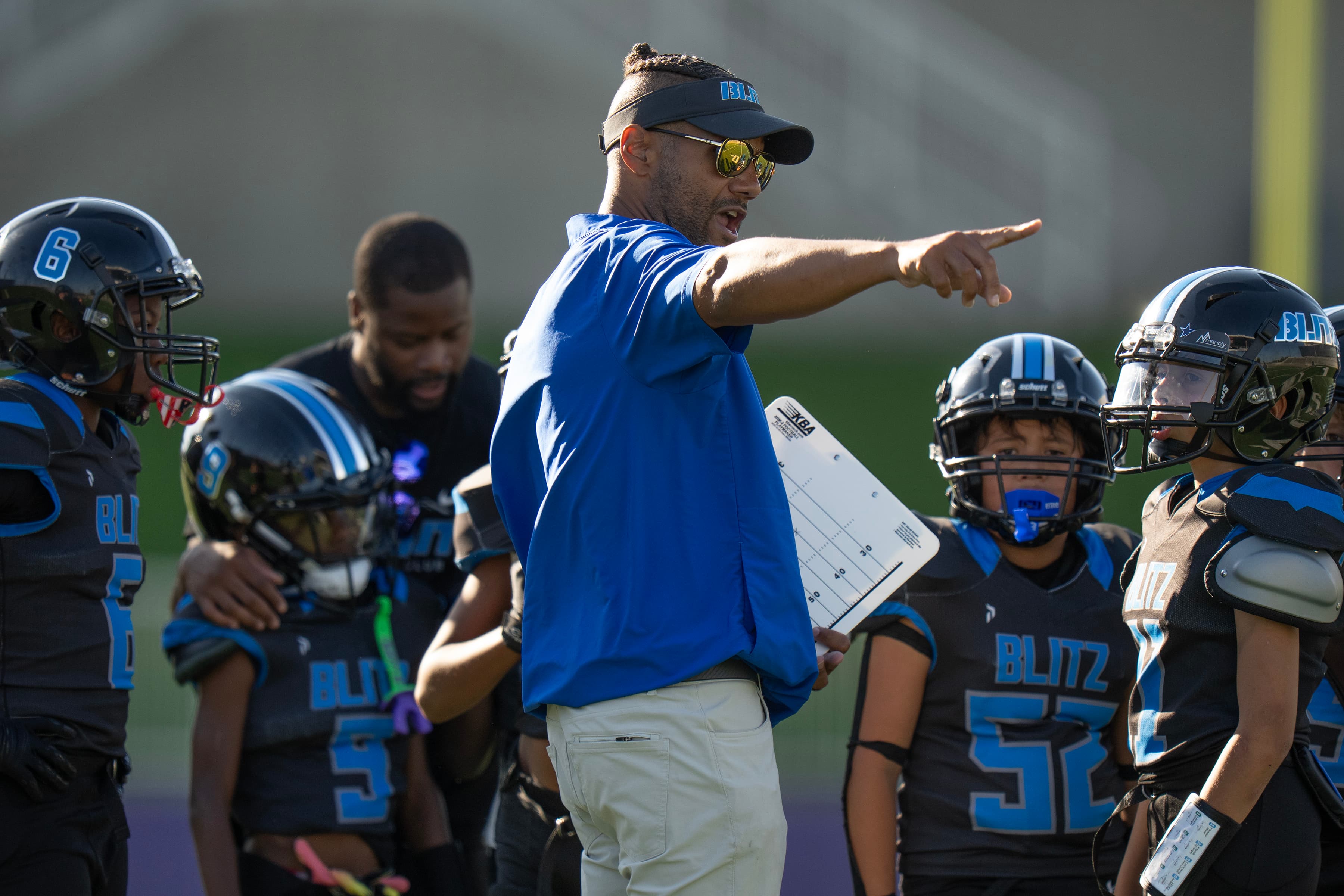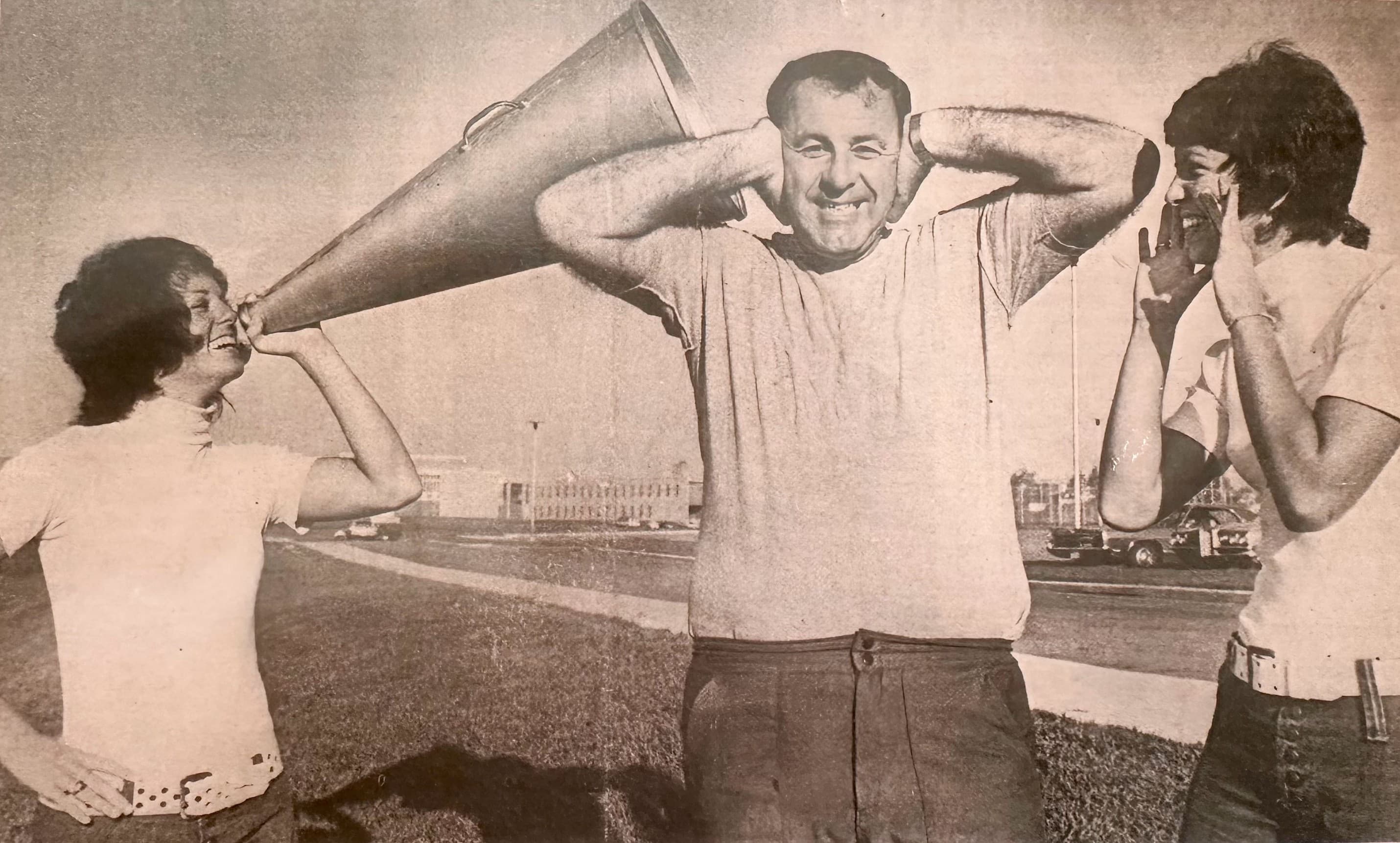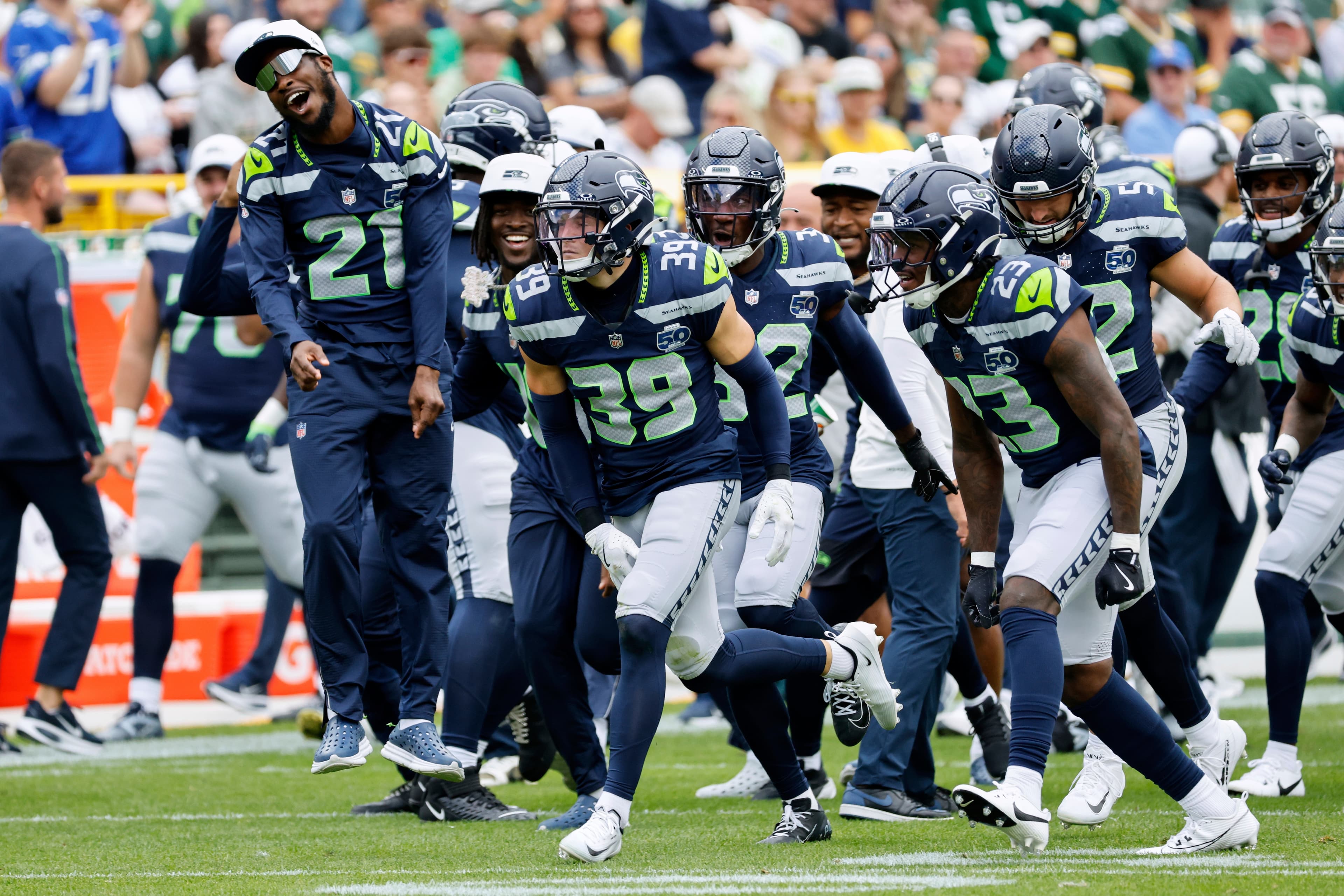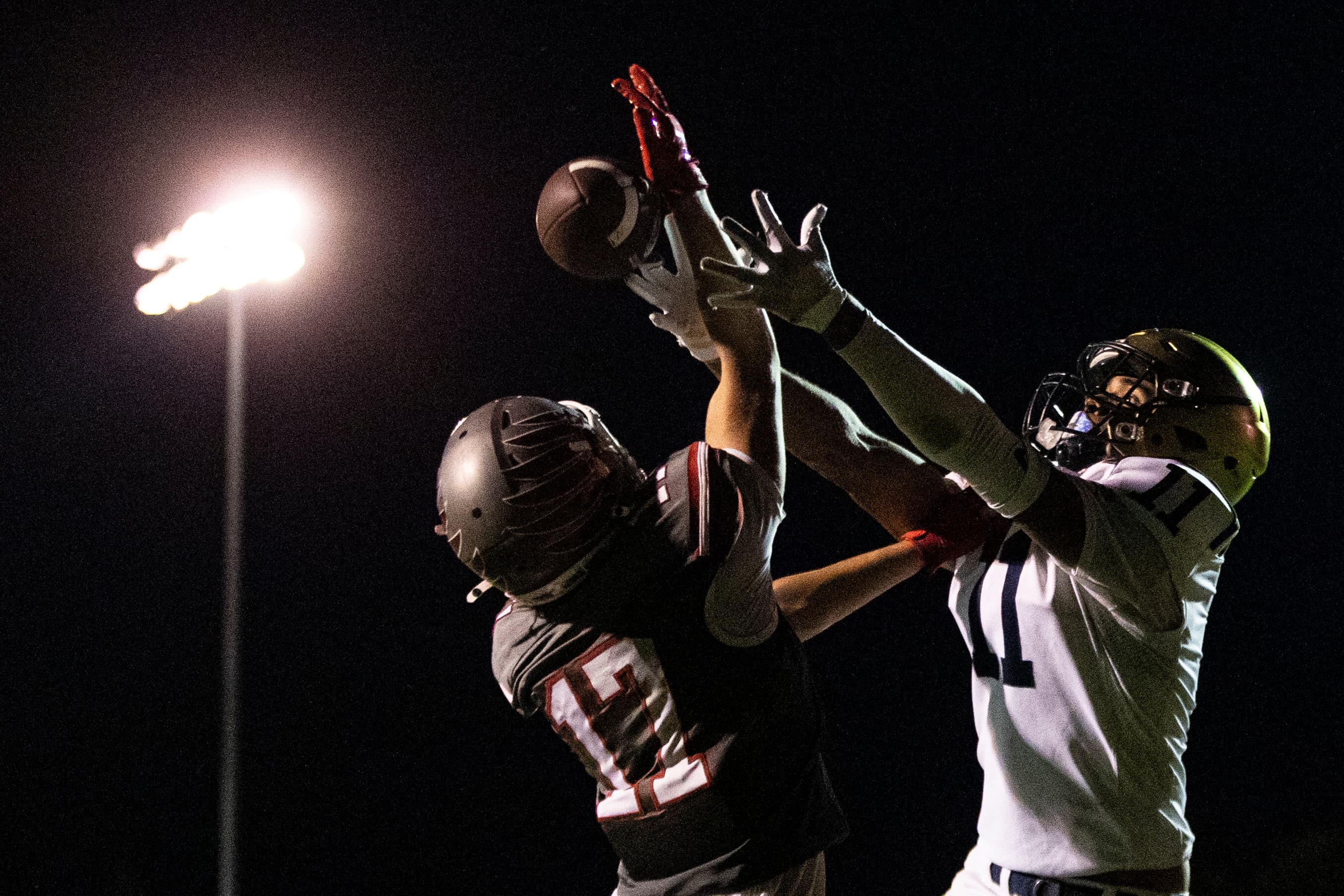Is Minnesota’s youth football philosophy holding back top players?
Strib VarsityMinnesota youth football programs distribute talent evenly, instead of forming A, B and C teams, and some leaders say that’s a mistake.

The Minnesota Star Tribune
The feeder programs that stock some of Minnesota’s high school football powerhouses — teams such as Maple Grove, Minnetonka and Edina — are less concerned about winning at the youth level than you might expect.
From fourth through eighth grade, there are no playoffs or standings. They don’t even post the scores.
“We don’t do any of that,” said Chris Buboltz, director of the Lake Minnetonka Athletic Association (LMAA). “After the last game, everybody shakes hands and moves on to the next season.”
Other youth football programs in Minnesota do keep score. With few exceptions, however, every association purposefully spreads talent evenly among teams, instead of forming an A team, B team and C team, etc.
The A-B-C approach is common in Minnesota for other sports, such as hockey, basketball, baseball, softball, volleyball and soccer — but not football.
This frustrates some football leaders who say Minnesota’s philosophy is holding the top players back.
“I’m a huge believer that Minnesota has a ton of talent,” former Gophers assistant coach Mike Sherels said. “Having recruited the state for many years, I started to kind of connect the dots as to why we don’t have more top-end players.
“I don’t want to throw it on [community] associations because they’re doing what they know. But I think we’ve kind of gotten away from development.”
Bloomington Kennedy activities director Jareck Horton said there is no disputing the success of Minnetonka, Maple Grove and Edina at the high school level.
But he believes standout youth players would flourish with better competition under the A-B-C model. At a meeting with representatives from 30 youth football associations, Horton asked if anyone else felt strongly about splitting into A, B and C teams.
“Zero hands went up,” Horton said. “Zero hands.”
Related Coverage
The thinking seems to be, “It’s good for Minnesota, and that’s good enough,” he said, adding, “and I don’t agree with that.”
Land of leagues
Youth football runs differently than other Minnesota sports. For example, when USA Hockey eliminated checking at the peewee level (ages 11-12), Minnesota youth hockey associations immediately complied.
In Minnesota, football has more of a patchwork system, with clusters of youth programs forming leagues that have variances in their rules.
This year, two prominent leagues consolidated to form the Gopher State Football League, comprised of 30 youth associations, including some that had been considering the A-B-C approach.
“I basically sat down and sang ‘Kumbaya’ with them,” said Dawson Blanck, executive director of the Gopher State league. “We had a few fierce conversations on how it would work.”
One league in no hurry to consolidate or change is LMAA, which houses the youth programs for Edina, Hopkins, Maple Grove, Minnetonka, St. Louis Park and Wayzata.
Some of the league’s distinctive rules include:
• The six associations must use an “equidraft,” designed to distribute talent evenly among teams.
• Fourth- through sixth-graders play 9-on-9 football. Seventh- and eighth-graders play 11-on-11.
• Fourth- through sixth-graders play on a smaller field, 80x40 yards. Seventh- and eighth-graders play on the standard 100x50 field.
• For all grades, every six plays coaches must “clear the bench,” rotating players from the sideline onto the field.
“If you think of it like hockey, each team is required to do a line change,” Buboltz, of LMAA, said. “The rules are specific to our league to ensure that kids get the maximum amount of playing time regardless of their skill set or ability.”
Horton said he likes that those rules ensure reps for all players. But without the A-B-C approach, some reps can turn into complete mismatches.
“You have fourth-grade Timmy — who’s 3-foot-6, 40 pounds — on one end, and you’ve got Jumbo Joshua on the other end,” Horton said. “I still don’t think that is necessarily a benefit to the kids.”
Buboltz said there will be time for more heated competition once these youth players reach high school.
“That’s just been my philosophy on it,” he said. “And quite honestly, not just mine. It’s been the philosophy of the LMAA since it’s been around in the ’60s.”
Numbers game
The system works perfectly for Maple Grove, which has won two of the past three Prep Bowls in Class 6A, Minnesota’s highest level.
For those who think Maple Grove’s talent would only grow if the Crimson could form an A and B team each year, “I would 100 percent disagree,” varsity head coach Adam Spurrell said.
“Simply because in football, it is truly a numbers sport,” he added. “And we’ve had our best numbers in probably about 20-some years.”
Maple Grove’s youth program produced 72 freshman football players this year and 68 sophomores.
“I do think part of it is the fact that we’re not making an A and B team,” Spurrell said. “Everybody gets to play on the team and be a Crimson, and I think that is to our advantage.”
Andover, another flourishing youth program, had 65 eighth-graders continue on to the freshman team. Shakopee usually has 45-60 players make that climb.
One common thread for these youth teams is friendship. Blaine Youth Football President Jesse Schwartz used his own 24-player team as an example.
“There are probably five players who aren’t the greatest football players, and if they weren’t on our team they would probably quit football,” he said. “They just want the camaraderie with their buddies. They want to be a part of something.”
That goes for smaller schools, too.
Annandale, ranked No. 1 in Class 3A, typically gets 28-30 ninth-graders out for football, coach Matt Walter said.
“For a 3A school, we have really good numbers,” Walter said. “And one of the reasons why we retain a lot of kids is because we don’t travel.”
Walter said most of Annandale’s development happens in controlled in-house scrimmages.
“The youth football world right now in Minnesota does not want levels of play,” said Blanck, from the Gopher State league.
In southeastern Wisconsin, for comparison, the All-American Youth Football League (AAYFL) has 146 teams from 38 community programs. One key difference from Minnesota comes in eighth grade, when the AAYFL divides into a Division I, II and III format, just like the A-B-C approach.
“We want the kids to get experience, have fun, develop, and then in eighth grade, we have a championship at each division,” AAYFL Commissioner Greg Clark said.
The club approach
Sherels retired as a college coach because of a life-threatening intestinal issue in 2016. But he kept his passion for the game and studied how best to get 10-year-old son Quinton started in tackle football.
After visiting several youth football associations last fall and watching their practices, Sherels felt his son needed something different.
“It’s really hard to coach youth football,” Sherels said. “There are really good youth football coaches out there, and then there are a bunch of dads who are just trying to deliver the best experience for their kids.”
But dividing the talent evenly?
“Just coming from the college football world, that is not a model that I espouse at all,” Sherels said. “The other sports don’t do it that way.”
Ultimately, Sherels decided to start his own 10-U club team. He built a coaching staff that includes former NFL players Jasper Brinkley, Varmah Sonie and Lewis Kidd.
The team is called 612-Blitz. It practices and plays at TCO Stadium, the Vikings’ training facility in Eagan. One day, Vikings running back Aaron Jones brought his son to watch 612-Blitz practice.
The players have black uniforms with blue trim and helmet stickers. Last month, they played Team Hit & Stick, which is made up of future Minneapolis North players.
After warmups, both teams left the field so they could re-emerge with a run through the tunnel, just past Hit & Stick’s 10-member cheerleading squad.
The TCO scoreboard counted down the time, and 612-Blitz rallied for a 22-12 win.
“There’s always going to be a parent who says, ‘I don’t want to play community-based football,’ ” said Jason Strasser, president of Andover youth football. “They want to go build an all-star team and go play against other all-star teams.
“It doesn’t work. All those programs make it pretty much two years.”
Sherels, who walked on with the Gophers and became a two-year captain, said he is no youth football expert.
“I don’t even know if this will be a solution, this club deal,” he said. “But I know that I’m having fun, and I know that the kids are having fun. I don’t think we’re hurting anybody.
“If this model could take off and at least be an option for kids and families, I think that it would help the top end of Minnesota football.”
About the Author
Joe Christensen
Strib Varsity Enterprise Reporter
Joe Christensen is our Strib Varsity Enterprise Reporter and moved into this position after several years as an editor. Joe graduated from the University of Minnesota and spent 15 years covering Major League Baseball, including stops at the Riverside Press-Enterprise and Baltimore Sun. He joined the Minnesota Star Tribune in 2005.
See More


Comments